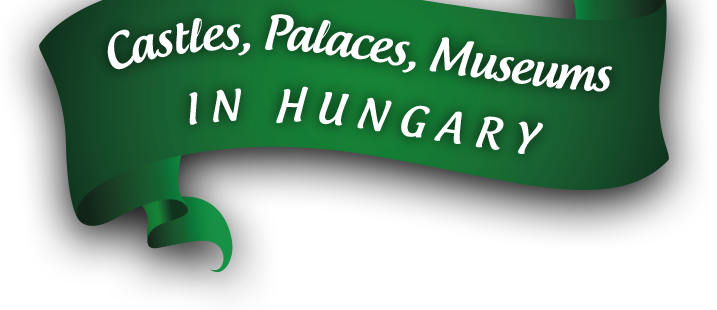Please, select region!
HISTORY OF HUNGARY
BEFORE MAGYARS ARRIVED
Traces of prehistoric man living in the Carpathian Basin around 500 000 years ago were found in Vértesszőlős or in the caves of the Bükk Mountains in Northern Hungary.
The Romans had a great impact on the development of the settlements, west of the Danube which they conquered in the 1st century and transformed into a Roman province called Pannonia ( the area is called Transdanubia today).
The 400 year long Roman era brought about thriving towns and prosperity the evidence of which you can see in Budapest (called Aquincum in the Roman Times) and in towns like Szombathely and Sopron in Western Transdanubia, or in Pécs, in Southern Transdanubia. In the 5th century the Romans were forced to gave up Pannonia to the Huns lead by their legendary leader Attila. After the fall of the Hun Empire a few other tribes followed each other in the Carpathian Basin during the era called the Great Migration: Goths, Avars.
HISTORY OF HUNGARY– CONQUERING THE CARPATHIAN BASIN
After years of wandering 7 Magyars Tribes lead by Árpád conquered the Carpathian Basin in 895. The nomad Magyars finally found a permanent home after years of roaming in the steppe. However they have to gave up their former lifestyle in order to settle down and be accepted by christian Western Europe
The Hungarians were excellent fighters, raided Europe until I Otto and his army stopped them in the Battle of Augsburg in 955.
Duke Géza (947-997) realised that Hungarians’ had two choices in order to survive and found a state: either become the ally of the two main empires ruling Europe at that time: the Holy Roman Empire and the Byzantine Empire, or be crushed by these two dominant forces. Géza wisely decided to convert Hungarians into christianity: to set an example he and his son Vajk were baptised. Géza had also requested a crown for his son from Pope Sylvester II.
The Holy Crown
Vajk chose the christian name István (Stephen) when he was crowned as Hungary’s first king in 1000. King Stephen founded bishopries, one primateship in Esztergom, several abbeys and built churches throughout the country. The remains of some are the cathedral in Székesfehérvár, the monarsterys in Pécsvárad and in Zalavár. Esztergom and Visegrád, the two royal towns in the Danube Bend also have many monuments from King Stephen’s era and from the early middle ages.
THE ÁRPÁD DYNASTY
Following the turmoils after King Stephen’s death in 1038, kings from the House of Árpád reigned in Hungary, ruling a strong and large state in the heart of Europe.
1077-1095 Reign of King Ladislas (Laszlo) I, who establishes Hungarian control over Croatia.
1172-1196 reign of King Bela ( Béla) III, is an orderly, prosperous period in Hungary’s history. His scribe, known as Anonymous, writes Gesta Hungarorum, the earliest surviving chronicle of Hungary.
1241-1242 the Mongols invaded Hungary. After the defeat of the Hungarian army at the battle of Muhi, the king had to flee from the country. About 50% of the population died during the invasion. King Béla IV rebuilt the country with many fortifications, fortresses. 1301 end of the Dynasty of Árpád.
14th- 15th CENTURIES
After the Dynasty of Árpád died out, under the reign of their successors, the Anjous, Hungary become a dominant power in Central Europe. Anjou Louis the Great of Hungary was also crowned King of Poland. The first university was established in Pécs/ Hungary during his reign.
Louis’ successors and son-in-law, Sigismund from the Luxembourg Dynasty was king of Bohemia and the Holy Roman Empreror at the same time. The kings of this era made special efforts to unite christian forces to prevent a possible conquest by the Ottoman Turks.
1456 János (John) Hunyadi, Governor of Hungary stopped the attacking Turks at Nándorfehérvár (Belgrade). Pope Callixtus III ordered the bells of every European church to be tolled as a call to pray for the defenders of the city. As the news of the vistory spread before the arrival of the papal order, the chiming of bells at noon was transformed into a commemoration of this victory.
1458-1490 Mátyás (Matthias) Hunyadi’s reign brought a Golden Age in Hungary. The Hungarian Kingdom became an important Central European power again and a centre of Renaissance culture.
1526 the Battle of Mohács fought against the attacking Ottoman Turkish Empire sealed the fate of an independent Hungary. 150 years of Turkish occupation followed in the country.
1686 – 1699 the Ottoman Turks were expelled from Hungary. Afterward Habsburg was united under the reign of the Habsburgs. Habsburg absolutism and tyranny ignited several riots and independence wars in Hungary.
1703-1711 an independence war was fought under the leadership of Ferenc Rákóczi II, Prince of Transylvania, against the Habsburgs. The rebels defeated the imperial army in several battles, but the rebellion was eventually put down.
FIRST HALF OF 19th CENTURY
A national reform movement was launched for the political and economic transformation of the country, for Hungarian language and culture. This was when the National Anthem was born, and the Hungarian Academy of Sciences was set up. The initiator of these was Count István Széchenyi, an excellent figure of the Reform Age.
1848-1849 A revolution broke out in Pest, which extended over the entire
country. The Habsburg Emperor was dethroned after the Hungarian army won several significant battles. The longest European national revolution could only be opressed in the summer of 1849 by the Habsburgs with the help of the Russian army.
1867 The Hungarians concluded a compromise with the Habsburgs. A double-centred monarchy was set up with seats in Vienna and Pest-Buda. A spectacular industrial upswing started.
1873 Pest, Buda and Óbuda were unified: Budapest became an attractive European city. The building of that time – the Opera House, the Parliament – still determine the skyline of the city.

